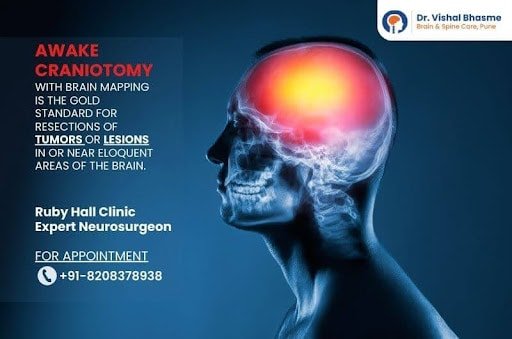Awake craniotomy, also known as awake brain surgery, is a ground-breaking medical procedure that has revolutionized the field of neurosurgery. It involves performing brain surgery while the patient is awake and conscious, which allows the surgical team to interact with the patient in real-time, ensuring the preservation of critical brain functions. This brain procedure has become increasingly popular and has significantly improved the outcomes of brain surgeries for a variety of conditions. In this article, we will explore what awake craniotomy is, the conditions it treats, the advantages it offers, and its implications for the future of neurosurgery.
What is Awake Craniotomy?
Awake craniotomy is a surgical procedure in which a portion of the patient’s skull is removed to access the brain while the patient is awake and responsive. The procedure is typically performed under local anesthesia, which numbs the scalp and the outer layer of the brain, but the patient remains awake and aware during the operation. This unique approach allows neurosurgeons to map and monitor critical areas of the brain and preserve essential functions such as speech, motor skills, and sensory perception.
Conditions Treated with Awake Craniotomy
Awake craniotomy is employed for various neurological conditions, including but not limited to:
Brain Tumor: It is often used to remove tumors located in areas of the brain responsible for vital functions, minimizing damage to healthy brain tissue.
Epilepsy Surgery: For cases where epilepsy originates in eloquent brain regions, awake craniotomy is used to identify and remove the epileptic focus while preserving essential functions.
Functional Neurosurgery: Awake craniotomy is used to implant deep brain stimulation electrodes or perform other procedures to treat conditions like Parkinson’s disease or essential tremor.
The Advantages of Awake Craniotomy
Improved Safety: One of the primary benefits of awake craniotomy is the enhanced safety it offers. Real-time monitoring allows neurosurgeons to adjust their approach as needed, reducing the risk of complications and permanent damage.
Precise Brain Mapping: Awake patients can provide immediate feedback to surgeons during critical tasks such as speech and motor function mapping. This helps identify and avoid areas responsible for vital functions.
Maximum Tumor Resection: For brain tumor surgeries, awake craniotomy can result in a higher rate of complete tumor removal while minimizing harm to the surrounding brain tissue.
Quicker Recovery: Patients who undergo awake craniotomy often experience a faster recovery and shorter hospital stay compared to traditional brain surgeries.
Personalized Care: The procedure allows for an individualized approach tailored to the patient’s specific needs and condition.
Implications for the Future of Neurosurgery
Awake craniotomy represents a significant advancement in the field of neurosurgery. As technology and techniques continue to evolve, it is likely that the procedure will become even more refined and widely adopted. This approach may be applied to a broader range of neurological conditions, further improving patient outcomes.
Additionally, the practice of awake craniotomy highlights the importance of interdisciplinary collaboration between neurosurgeons, neurologists, speech therapists, and other medical professionals. This collaboration is essential for planning and executing the surgery, as well as for post-operative rehabilitation and care.
Conclusion
Awake craniotomy has brought about a paradigm shift in the world of neurosurgery. By enabling surgeons to perform intricate brain surgeries while the patient is awake, this innovative procedure has greatly improved safety, precision, and patient outcomes.
Dr. Vishal Bhasme, a highly skilled neurosurgeon, specializes in awake craniotomy procedures. With his extensive experience and expertise, he offers patients a safe and personalized approach to brain surgeries. His commitment to ensuring optimal outcomes and preserving essential brain functions makes him a trusted choice for patients in need of this innovative surgical technique.















